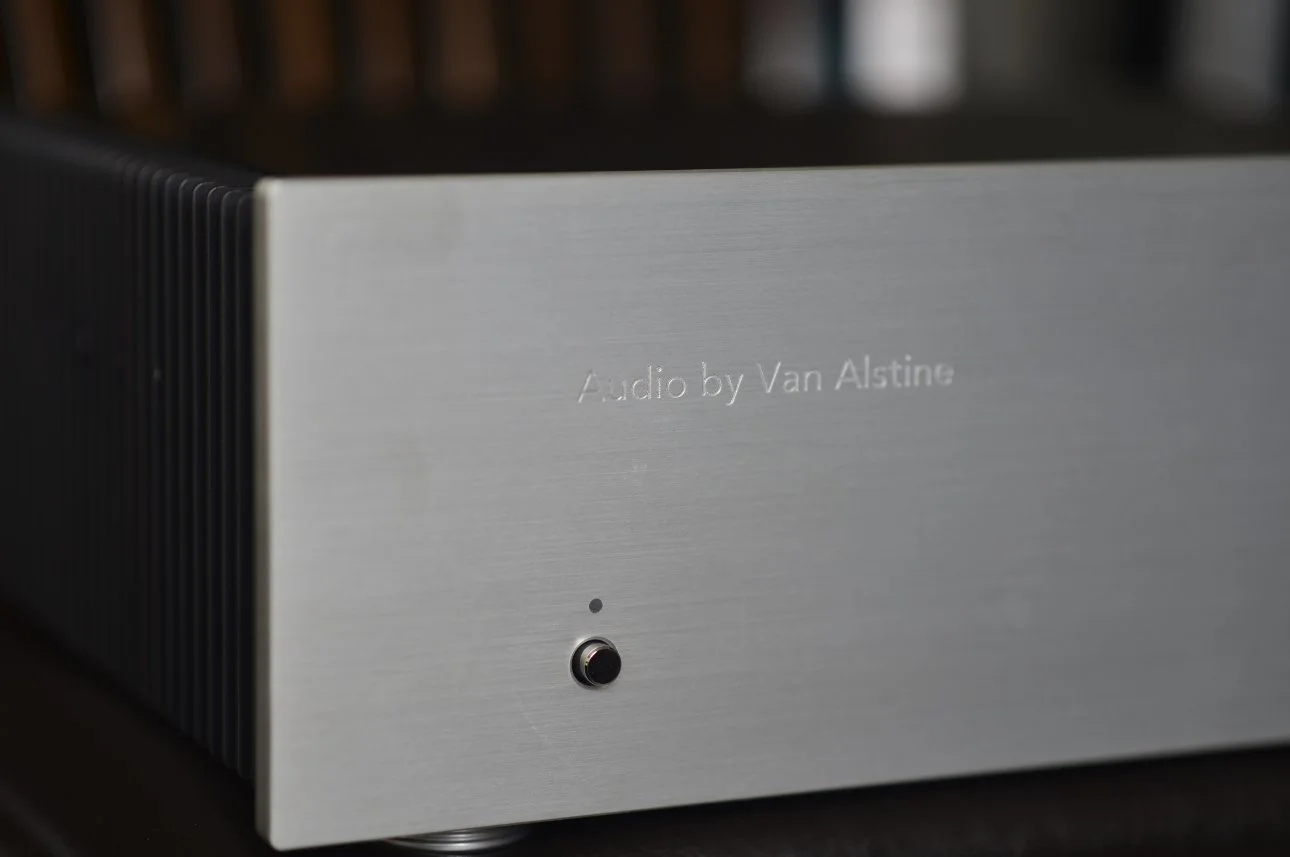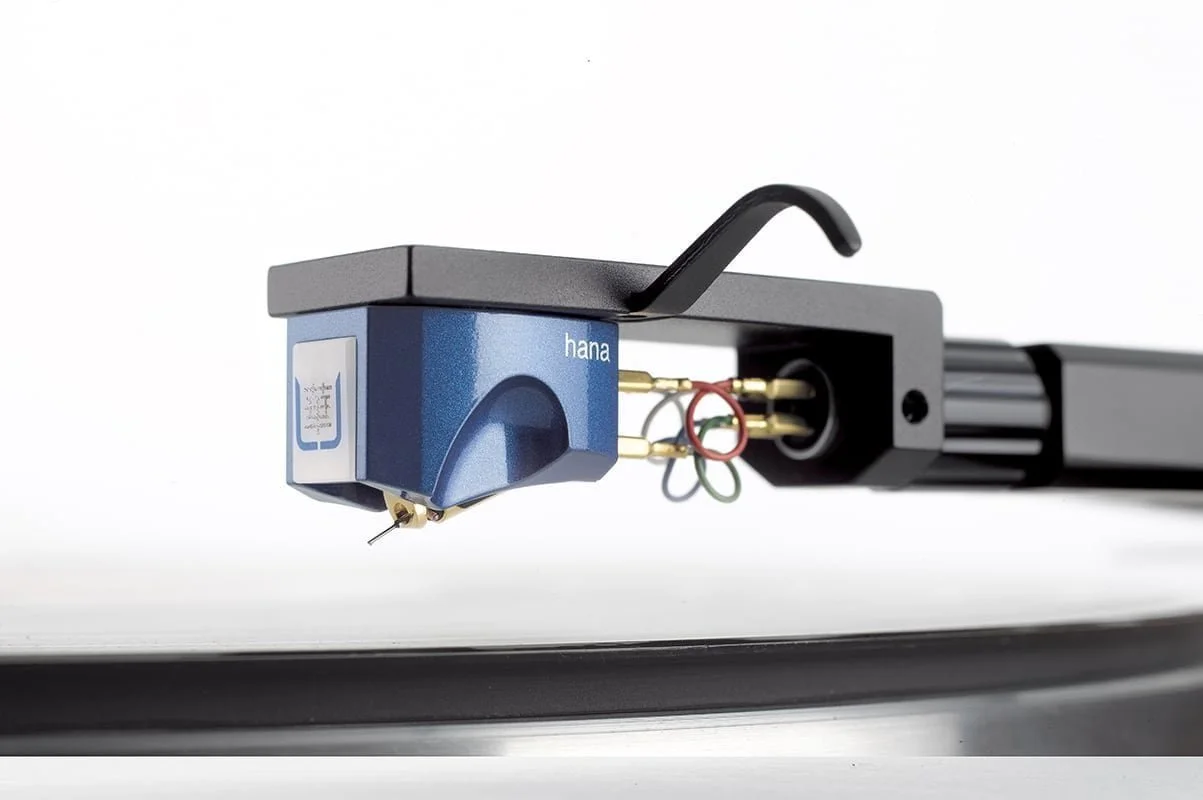Audio by Van Alstine DVA M750 Monoblock Power Amplifier
In 2018 I reviewed a new superb-sounding solid-state amplifier from Audio by Van Alstine: the DVA SET 600 Monoblock amplifier ($4998/pair), a powerful (600 watts into 8 Ohms), balanced, Class A/B monoblock. I ended up buying a pair and they have remained my reference for almost five years.
Recently, after several years of development, Van Alstine has released a newly designed and even more powerful solid-state monoblock amp to replace the SET 600: the DVA M750 Monoblock Power Amplifier ($5598/pair); the focus of this review. Special thanks to Frank Van Alstine for supplying me with the review units.
The DVA M750 is balanced (XLR only), Class A/B (but operates as Class A at normal listening levels), and fully differential. As described on the Audio by Van Alstine website:
The DVA M750 is rated at 750 watts into 8 Ohms and will deliver even more into 4 Ohms. It is the first high-power mono amp in our newly designed chassis. The DVA M750 is for those that want the ultimate in amplifier headroom. It includes a differential XLR input jack, a parallel set of improved high-quality 5-way gold-plated speaker binding posts, and a standard IEC power socket. The faceplate is 10mm thick silver anodized aluminum. The combination of our design ideas, along with our new chassis, allows the amplifier to run cooler, last longer, and be amazingly fault tolerant. Eight double-die MOSFET output transistors handle difficult speaker loads.
Dimensions: 17" wide, 12.5" deep, 6" high. Shipping weight is 38 pounds/each.
Photo credit: Karl Sigman
A must-read before we move on is the entertaining, thoughtful, and well-advised upfront part of the M750 Instructions Manual (a pamphlet included with each shipping box), which contains some choice passages such as the following, under the heading, “Some comments about the rational use of high-power amplifiers”:
A pair of DVA M750 amplifiers can provide over 1500 watts of power to your speakers. This is enough power if carelessly used, to damage almost any speaker system.
The DVA M750 amplifiers are not designed to reproduce the ear-damaging levels of live rock concerts. Your ears, your windows, and your associated equipment will be ruined if you attempt this.
Accidents must be carefully avoided. A dropped record turntable tone arm, hot disconnection or connection of an interconnect cable, or hot disconnection or connection of a speaker cable can turn your speakers into confetti.
Development of the DVA M750
The development of the DVA M750 has an interesting story behind it. In 2018, Van Alstine had just released the Vision SET 400 stereo amplifier (single-ended input; $2199). Motivated by customer interest in manufacturing a powerful, balanced monoblock, Van Alstine reconfigured a SET 400’s original stereo wiring to run the + and − concerning ground signal for connecting a balanced cable (XLR), quickly converting it into what became the DVA SET 600 Balanced Monoblock. The simplicity of the conversion made it possible to offer them for sale right away; no time-consuming remanufacturing, new chassis, or new designs were needed.
But Frank Van Alstine then set his sights on developing a better version from scratch: a powerful, balanced monoblock amp by design—without using the stereo SET 400. In 2021, Van Alstine first released a less powerful version of what he had in mind, the remarkable DVA M225 (225 watts into 8 Ohms at $3398/pair), but it took several more years of hard work and experimentation to scale it up to get the DVA M750. When I queried Van Alstine, he had this to say:
The DVA M750 is essentially an M225 scaled-up X3. It required more output MOSFETs, more heat sinks, a bigger transformer, a bigger power supply, and lots of work massaging the circuits as it is a completely new layout. Of course, there is a brand new chassis, much nicer than the old one. The improved sound quality over the M225 probably is due to the much-increased power. The M750 is just idling along where the M225 was reaching its limits. The double set of output jacks included on the M750 allows easy bi-wiring if desired.
My Use
For this review, I simply swapped out my reference Audio by Van Alstine DVA 600 monoblocks with the DVA 750 monoblocks, using the same other reference equipment. The DVA 750 are a bit smaller in size, making them easily fit in the same location as the DVA 600 had been (2 separate shelves, one above the other in my Salamander Designs vertical center cabinet). The DVA 600 were already burned in, so I did not need to worry about that issue, but I did use them for weeks before final listening for this review.
Other gear included: Preamp: PS Audio BHK Signature ($6000); DAC: Mojo Audio Mystique X SE ($9999); Music Server: Mojo Audio Deja Vu ($7000) (with a Roon Core); CD Transport: Jay’s Audio CDT3-MK3 ($4998); Speakers: Alta Audio Adam Floorstanding ($18,000/pair); Phono Stage: Pass Labs XP-17 ($4300); Turntable: VPI Industries HW-40 Direct Drive ($15,000) with a Grado Aeon3 Cartridge ($6,000); Power regenerators: PS Audio Direct Stream Power Plant 12 (2, $6000/each). Cabling by Audio Art Cable, Wireworld Cable Technology and Waveform Fidelity; Isolation/Footers by Iso Acoustics.
An interesting side note: Unlike what most solid-state audio manufacturers suggest, Audio by Van Alstine advises their solid-state amps (such as the DVA 750) should not be powered on 24/7.
How does the DVA M750 look?
The new chassis (with a black metal back and sides but with a silver-coloured faceplate) is fitted with 4 solid silver-coloured footers and has several practical advantages/improvements over the SET 600. The heat grills are now on the sides, none on the back; thus, the extra space on the nicely designed back allows for easy access: The two sets of gold-plated binding posts (for bi-wiring if desired) in the middle are strong, high quality, and offer an excellent banana plug connection. Above the posts lies the XLR input, with a chassis ground switch (on/off) and IEC power socket on the right (I used the highest level power cables by Audio Art Cable). Three accessible fuses are included on the back; 2 for speaker (+/-), and 1 for line.
Photo credit: Karl Sigman
The silver anodized aluminum front, with “Audio by Van Alstine” sketched into the metal in the upper left, is simple and tasteful looking, with only a power button with a small blue light above it when on.
Sound Quality
Compared to the SET 600, there is, yet again, an impressively large soundstage, but (in addition to more power) a quieter presence, more clarity, tighter bass, and even more pinpoint accuracy of instruments in the soundstage. The increased clarity was particularly noticeable; almost every piece of music I played illustrated that. (As for quieter: when I would turn the volume up without playing music and put my ear to the drivers, it too was quieter than before, now essentially dead quiet.)
I now use a different set of reference speakers, the Adam from Alta Audio, with 3 drivers instead of 2, and delivering a bass response significantly below 20 hz. The M750 made for a wonderful match. Here are three examples.
“Escondido,” from Early Reflections, The Bennie Maupin Quartet. (2008) 16/44.1 FLAC (Qobuz) and CD. If I only had one piece of music to illustrate all of the above improvements, it would be this Maupin track. I had used it in my SET 600 review, and (hard to believe) now sounds even better; incredible. One of the great recordings with a prominent role for a bass clarinet. If played too loud, the bass could cause some resonance in my space and overpower things; no longer.
“Get High,” by Brandy Clark, from her (2013) album 12 Stories. (Clark is the composer, lead vocalist, and acoustic guitarist.) Her voice entrance way up “high” in the center of the soundstage is after her lively acoustic guitar starts things rolling by forcefully grabbing your attention from the right channel. This is a funny and well-recorded country music song. It shows off the fine clarity, quiet nature, natural acoustic sound, and large 3D soundstage offered by the M750s. Clark could not record it years earlier when she wrote it because of her Nashville connections with their unacceptance of the lyrics about a housewife who smokes marijuana to get by from her unsatisfying and boring family life.
“Canon,” by Charles Mingus, from The Complete 1970s Atlantic Studio Recordings (2023 remastered), 24/192 (Qobuz). Starting with some intimate-sounding tenor sax by George Adams from the right channel, with delicate earthy drum rolls coming from the left channel, then joined (on the left) by Ronald Hampton on trumpet and some more percussion (bells)—this is a superb recording and performance. After about the 1:15 mark, the piano enters delicately along with Mingus on bass, and some engaging cymbal work, and then at about 2:30, all of the musicians begin to play stronger together in earnest (not so left/right anymore). The quiet aspect of the M750s and their clarity is brilliantly displayed.
Summary
Van Alstine’s vision for a better, more powerful monoblock amp has come to life with the DVA M750 Monoblock. I know of no other monoblock amp on the market, at a price of only $5598/pair that can perform like this, with such power, and finesse, and endowed with such a large quiet soundstage presented with exceptional clarity. Very highly recommended.
Further information: Audio by Van Alstine









